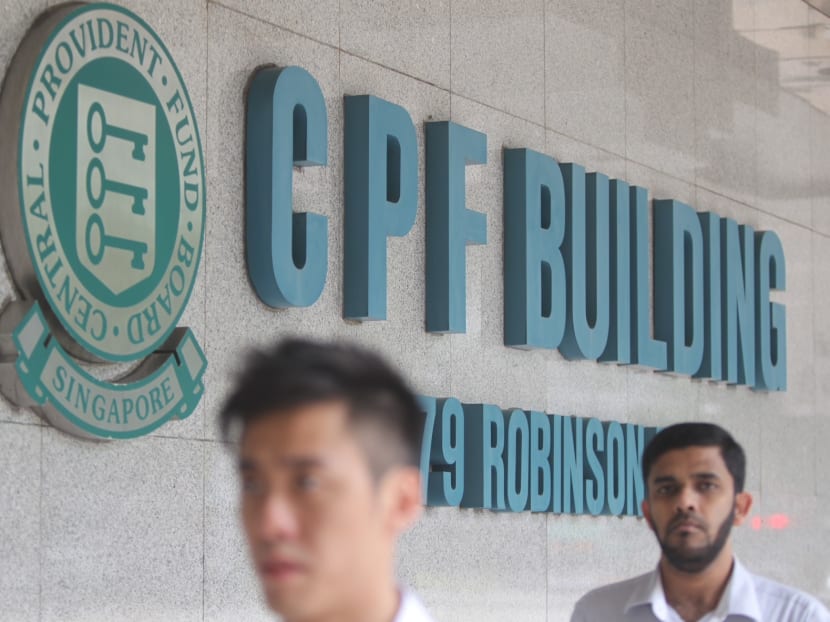SG Budget 2025: CPF & Retirement with New Contribution Rates, Withdrawals, and Incentives
The Singapore Budget 2025, announced in February 2025, introduces a series of transformative changes to the Central Provident Fund (CPF) system.
These significant changes focus on enhancing retirement adequacy, healthcare savings, and financial security for Singaporeans.
This article, tailored for working professionals aged 25-40, senior management, C-suite professionals, soon-to-be retirees, and retirees, provides a detailed analysis of these updates.
These updates cover contribution rate changes, new schemes, and their implications. We’ll explore analytical insights, value-added tips, and step-by-step guidance to help readers navigate these changes effectively.
Why These Updates or Changes Matter
With life expectancy increasing and living costs rising, these changes ensure that Singaporeans can build sufficient savings for retirement and healthcare needs.
For younger professionals, these updates offer opportunities to start early, while mid-career individuals and retirees can leverage new incentives to enhance their financial plans.

1. CPF Contribution Rate Increase for Senior Workers
Details and Analysis:
From January 1, 2025, CPF contribution rates for employees aged above 55 to 65 are increased to strengthen their retirement adequacy.
The total contribution rate rises by 1.5%, with the employer’s share increasing by 0.5% and the employee’s share by 1%.
Specific rates, effective from January 2025, are as follows:
| Age Group | Employer’s Share (%) | Employee’s Share (%) | Total Contribution Rate (%) |
|---|---|---|---|
| Above 55 to 60 | 15.5 | 17 | 32.5 |
| Above 60 to 65 | 12 | 11.5 | 23.5 |
To support businesses, the CPF Transition Offset, equivalent to half of the 2026 increase in employer contributions, is provided automatically, easing the financial burden on employers.

Benefits for Older Workers:
This increase allows senior workers to accumulate more savings in their CPF accounts, particularly in their Retirement Account (RA) — earning higher interest rates (up to 6% per annum on the first SGD 30,000 of combined balances).
For example, a 60-year-old earning SGD 5,000 monthly could see an additional SGD 75 in contributions. Hence, this means boosting their retirement fund significantly over time.
Step-by-Step Guidance:
- Review Your Current Contribution Rates: Log in to your CPF account at CPF Board to check your current contributions.
- Understand the Impact: Use the CPF contribution calculator on the CPF website to estimate the increase in your monthly contributions.
- Plan for Retirement: Consider how these additional savings can enhance your retirement payouts, especially if you plan to work beyond 65.
Analytical Insight:
For senior management and C-suite professionals, this change is a golden opportunity to build a stronger retirement nest egg, particularly if they are in high-income brackets.
However, for lower-income senior workers, the increased employee contribution might strain their take-home pay, though the employer offset mitigates business costs.

2. Expansion of Matched Retirement Savings Scheme (MRSS)
What is MRSS and Who It Originally Covered?
Launched in 2021, the Matched Retirement Savings Scheme (MRSS) provided a dollar-for-dollar government matching grant for voluntary cash top-ups to the RA, up to SGD 600 annually, for seniors aged 55 to 70 with lower retirement savings.
This scheme aimed to boost monthly payouts in retirement.
New Inclusion:
From January 1, 2025, MRSS is expanded to include Singaporeans with disabilities of all ages, registered with the Ministry of Social and Family Development (MSF), and meeting other eligibility criteria, such as CPF balances, monthly income, and property value.
The annual matching grant cap is increased to SGD 2,000, with a lifetime limit of SGD 20,000, and the age cap of 70 is removed.
Encouraging Voluntary Contributions:
This expansion encourages early savings for persons with disabilities, ensuring they can build a retirement fund regardless of age.
For example, a 40-year-old with a disability can now top up their RA and receive up to SGD 2,000 annually in matching grants, significantly enhancing their long-term financial security.
Value-Added Tips:
- For Young Professionals: If you have family members with disabilities, consider topping up their CPF RA to leverage the matching grant, especially if their income is low.
- For Retirees: Encourage loved ones with disabilities to register with MSF and check eligibility via the MRSS eligibility checker at CPF Board.
Step-by-Step Guidance:
- Check Eligibility: Visit the CPF website to use the MRSS eligibility checker and ensure registration with MSF if applicable.
- Make Top-Ups: Use CPF Mobile or the website to make cash top-ups by December 31 each year to receive the matching grant in February the following year.
- Monitor Savings: Regularly review your Retirement Dashboard to track top-ups and grants received.
Analytical Insight:
This expansion is a significant step toward inclusivity, addressing the financial needs of a vulnerable group. However, the requirement to register with MSF and meet income criteria might limit access for some, so awareness campaigns will be crucial.
3. Introduction of the Matched MediSave Scheme (MMSS)
What is MMSS and Why Is It Introduced?
The Matched MediSave Scheme (MMSS), introduced from 2026 to 2030, aims to boost MediSave adequacy for CPF members aged 55 to 70 with lower balances.
The government will match voluntary cash top-ups to the MediSave Account (MA) dollar-for-dollar, up to SGD 1,000 annually, to prepare seniors for healthcare costs in retirement.
Eligibility:
To qualify, the member’s MA balance must be less than half the prevailing Basic Healthcare Sum, which is SGD 75,500 in 2025, meaning less than SGD 37,750. Anyone, including family members or employers, can make the top-ups.
Ensuring Better Healthcare Savings:
This scheme complements MRSS by focusing on healthcare, ensuring seniors have sufficient MediSave for hospital stays, day surgeries, and outpatient treatments.
For instance, a 60-year-old with an MA balance of SGD 30,000 can top up SGD 7,750 to reach the threshold and receive a SGD 1,000 matching grant, enhancing their healthcare coverage.
Value-Added Tips:
- For Mid-Career Individuals: Start planning now for top-ups in 2026, especially if your MA balance is low, to maximise the matching grant.
- For Retirees: Use this scheme to build a healthcare safety net, particularly if you anticipate higher medical expenses in retirement.
Step-by-Step Guidance:
- Check MA Balance: Log in to your CPF account to review your current MA balance and compare it with half of the Basic Healthcare Sum.
- Plan Top-Ups: Decide on the amount to top up, ensuring it’s within the SGD 1,000 annual cap for matching.
- Make Top-Ups: Use CPF Mobile or the website to make cash top-ups, noting that top-ups attracting MMSS grants won’t qualify for tax relief from Year of Assessment 2027.
Analytical Insight:
MMSS is particularly beneficial for lower-income seniors, but the five-year duration (2026-2030) means planning is essential to maximise benefits before the scheme ends.
It also highlights the government’s focus on healthcare as a critical retirement need.

4. Closure of Special Account (SA) for CPF Members Aged 55 & Above
What Happens to Existing SA Balances?
From the second half of January 2025, the SA is closed for members aged 55 and above. Existing SA savings are transferred to the RA up to the member’s cohort Full Retirement Sum (FRS) — with any excess moved to the Ordinary Account (OA).
For example, if your FRS is SGD 213,000 in 2025 and your SA balance is SGD 250,000, this means SGD 213,000 goes to RA, and SGD 37,000 to OA.
Impact on Interest Rates and Withdrawal Eligibility:
- RA savings earn higher interest (up to 6% on the first SGD 30,000), while OA earns 2.5% and is withdrawable on demand.
- Members can transfer OA savings to RA up to the Enhanced Retirement Sum (ERS) of SGD 426,000 for higher payouts, but this is irreversible.
Effect on Retirement Planning and Cash Flow Management:
This change ensures retirement savings are ‘right-sited’ for long-term growth, but it reduces flexibility for those relying on SA for liquidity.
Members need to plan for housing or education loans using OA savings, which earn lower interest.
Value-Added Tips:
- For Soon-to-Be Retirees: Review your SA balance and decide if transferring to RA up to ERS is worth it for higher payouts, using the Retirement Payout Planner.
- For Retirees: If you have excess OA savings, consider investing via the CPF Investment Scheme for potentially higher returns, balancing risk and reward.
Step-by-Step Guidance:
- Check Transfers: Log in to your Retirement Dashboard to view estimated transfers from SA to RA and OA.
- Decide on Transfers: Evaluate if topping up RA to ERS (SGD 426,000) aligns with your retirement goals, considering your desired monthly payouts.
- Manage OA Savings: Use OA for immediate needs or invest via CPFIS, ensuring you understand the risks involved.
Analytical Insight:
The SA closure is a major shift, affecting 1.4 million members as of January 19, 2025. It may challenge those with substantial SA savings who valued its flexibility, but it aligns with long-term retirement adequacy goals.

5. Increase in Enhanced Retirement Sum (ERS) for CPF LIFE Payouts
New ERS Cap:
From January 1, 2025, the ERS is raised to SGD 426,000, which is four times the Basic Retirement Sum (BRS) of SGD 106,500 in 2025. Previously, ERS was three times the BRS, at SGD 308,700 in 2024.
Allows Higher Voluntary Top-Ups:
Members can now top up their RA to SGD 426,000 for higher CPF LIFE payouts, potentially increasing monthly payouts to around SGD 3,300 at age 65, up from SGD 2,500 previously, for those turning 55 in 2025.
Benefits for Retirees:
This change is ideal for retirees seeking greater financial security, allowing them to set aside more for lifelong monthly payouts under CPF LIFE, ensuring they can cover living expenses comfortably.
Value-Added Tips:
- For Pre-Retirees: If you’re close to 55, consider topping up to ERS to lock in higher payouts, using cash or transfers from OA, but ensure you have liquidity for other needs.
- For Retirees: Review your current RA balance and use the Monthly Payout Estimator to see how topping up to SGD 426,000 affects your payouts.
Step-by-Step Guidance:
- Assess Current RA Balance: Log in to your CPF account to check how much you’ve set aside in RA.
- Calculate Top-Up Needed: Determine the amount needed to reach SGD 426,000, considering tax relief benefits (up to SGD 16,000 annually for eligible top-ups).
- Make Top-Ups: Use CPF Mobile or the website to make cash top-ups or transfers, ensuring they’re done before year-end for tax benefits.
Analytical Insight:
The ERS increase to SGD 426,000 is a strategic move to align with rising living costs, but it requires careful planning, as topping up is irreversible and commits funds to retirement payouts.
6. What These CPF Changes Mean for You
Who Benefits the Most?
- Young Professionals (25-40): Benefit from starting early, leveraging MRSS for family members with disabilities and planning for future contribution rate increases.
- Mid-Career Individuals: Gain from voluntary top-ups under MRSS and MMSS, especially if nearing 55, to maximise matching grants and higher interest rates.
- Retirees and Pre-Retirees: Leverage ERS increase and MMSS for higher payouts and healthcare savings, ensuring a comfortable retirement.
Key Takeaways by Age Group:
- Young Professionals: Focus on maximising CPF contributions now, using tools like the Retirement Payout Planner to project future needs. Consider topping up for loved ones with disabilities under MRSS.
- Mid-Career Individuals: Evaluate voluntary top-ups to RA and MA, especially with MMSS starting in 2026, to build a robust retirement and healthcare fund. Plan for SA closure if nearing 55.
- Retirees and Pre-Retirees: Review RA balances and consider topping up to ERS (SGD 426,000) for higher payouts. Use MMSS to boost MediSave, ensuring healthcare coverage in retirement.
Practical Action Steps:
- Log in to your CPF account regularly to monitor balances and top-up limits.
- Use CPF calculators and planners available at CPF Board to estimate contributions, payouts, and eligibility for schemes.
- Seek advice from financial planners if unsure about investment options or transfer decisions, especially post-SA closure.
Conclusion:
The SG Budget 2025’s CPF changes are a significant step toward improving retirement adequacy for all Singaporeans.
Whether you’re just starting your career or planning for retirement, these updates offer opportunities to enhance your financial security.
Take action by reviewing your CPF balances, making voluntary contributions where beneficial, and planning ahead using the resources at CPF Board
Let us know what you think about this topic, and what do you want to hear next.
You can now be our community contributor and make a pitch to have your favourite personality be on our show.
Join our community group and drop us your insights on this topic.

-3.png?width=50&name=Square%20(2)-3.png)










Let us know what you think of this post